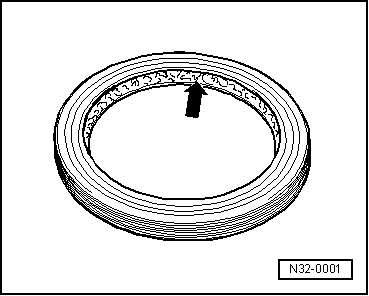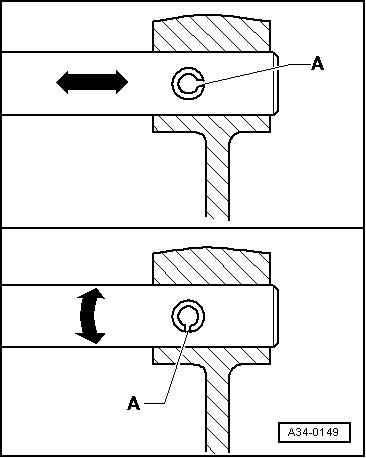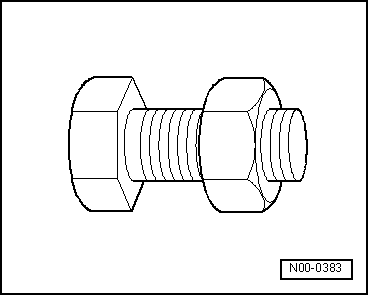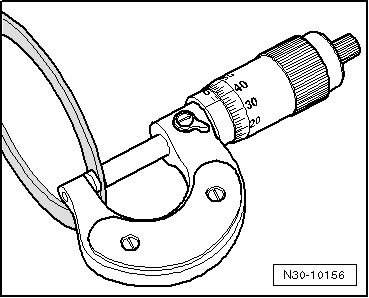| t
| Check for wear (gap -a-); renew if necessary. |
| t
| Check grooves on synchro-ring for wear (flattened sections in grooves). |
| t
| Make sure that the coating of coated synchro-rings is not damaged. |
| t
| Check chamfer on selector gear for scoring and visible traces of wear. |
| t
| Lubricate synchro-rings with gear oil before installing. |
| Gears, synchronising hubs, inner rings for selector gears |
| t
| Before installing, heat inner rings for selector gears to approx. 100° C using inductive heater -VAS 6414-. |
| t
| Use inductive heater -VAS 6414- to heat gear wheels and synchronising hubs to approx. 100°C before installing. Press home onto stop when installing so there is no axial clearance. |
| t
| Note correct installation position. |
| After installing, check 1st to 5th selector gears for minimal axial play and freedom of movement. |
| t
| When removing gearbox, remove clutch slave cylinder without disconnecting pipes. |
| t
| Do not depress the clutch pedal after removing the clutch slave cylinder if the hydraulic pipe is still connected. Otherwise the piston will be pressed out of the clutch slave cylinder. |
| t
| Ensure that the pressure plate is kept straight: loosen and tighten bolts in a diagonal sequence and in several gradual stages. |
| t
| If the clutch has burnt out, thoroughly clean the clutch housing, flywheel and parts of the engine facing the gearbox in order to reduce the smell of burnt linings. |
|
|
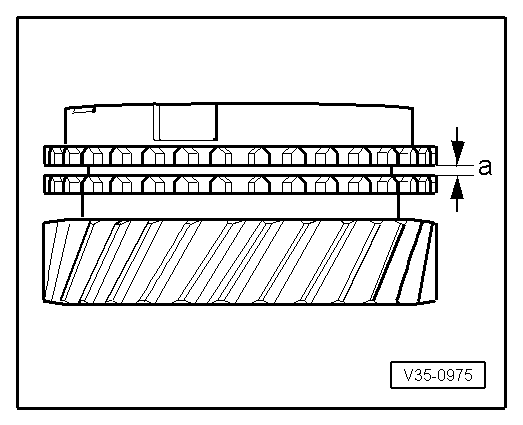
|
